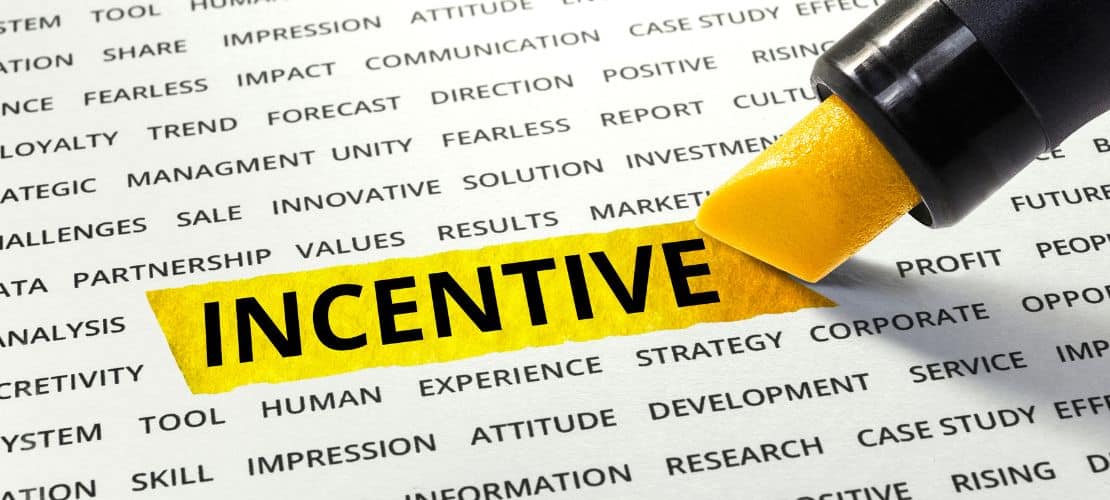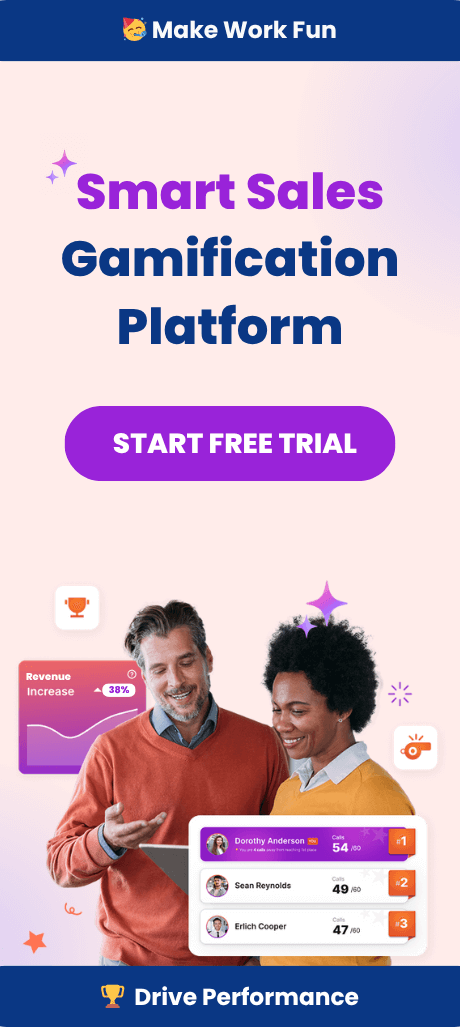Understanding Sales Talent Churn in Sales
Sales rep churn refers to the rate at which salespeople voluntarily or involuntarily leave a company. High churn is a chronic issue in sales organizations and creates instability in revenue forecasting, disrupts client relationships, and inflates hiring costs, making it crucial to retain the best sales talent.
According to Harvard Business Review, average annual turnover in sales is about 27%—nearly double the average across all industries. Understanding the root causes of this churn is essential for designing better environments, especially when incentives are at play.
Why Sales Rep Retention Matters
Retention directly correlates to performance. Reps who stay longer gain institutional knowledge, deepen client relationships, and close larger deals. When retention is low, so is team morale, training ROI, and pipeline stability.
Focusing on retaining existing customers is crucial for reducing customer churn and enhancing profitability. Investing in retention through effective inncnenmtives leads to fewer hiring cycles, more stable revenue, and stronger company culture. It’s not just about saving money—it’s about protecting momentum.
The Hidden Costs of Rep Turnover
Every time a rep leaves, the costs stack up: recruitment fees, onboarding, training, lost productivity, and customer churn. A study by DePaul University found that replacing a B2B sales rep can cost up to $115,000.
Even beyond financial costs, there’s reputational damage when clients experience frequent rep changes, and internal strain as teams absorb workloads. These costs make a compelling case for proactive retention strategies powered by smart incentive design.
Additionally, the impact on valuable customers cannot be overlooked, as they contribute significantly to revenue and their loyalty is crucial for long-term success.
What Drives Sales Professionals to Leave?
Churn is often blamed on pay, but it’s rarely just about compensation. Reps leave because they feel undervalued, unsupported, overworked, or stuck, and because they do not resonate with the company’s values. Misaligned expectations and unclear career paths are major contributors.
Lack of recognition, micromanagement, and poor incentives also rank high. By addressing these issues with thoughtful incentive programs, companies can retain their best performers and reduce exit rates significantly.

Signs Your Reps Are Disengaged
Disengagement doesn’t happen overnight. It’s a slow fade marked by reduced activity, missed KPIs, fewer internal interactions, and withdrawal from team culture. Disengaged reps are often still present—but mentally checked out.
Gathering customer feedback is crucial for understanding rep performance and identifying areas for improvement. Tracking these behaviors early allows leaders to intervene. One of the most effective ways to re-engage reps is through timely, relevant, and personalized incentives that reignite purpose and passion.
The Psychology Behind Incentives
Incentives tap into intrinsic and extrinsic motivators. While bonuses speak to financial motivation, recognition, purpose, and achievement satisfy psychological needs.
Understanding this balance is crucial. The most effective programs trigger emotional engagement—making reps feel seen, appreciated, and connected to something larger than quota numbers. Employee appreciation plays a significant role in this, as fostering a culture of recognition can lead to engaged and loyal employees.
Types of Sales Incentives That Work
Effective incentive types include:
- Performance-based bonuses
- Tangible rewards (gift cards, trips)
- Recognition-based incentives (leaderboards, shoutouts)
- Career advancement opportunities
- Wellness perks or extra PTO
Incorporating customer success strategies can also enhance the effectiveness of these incentives by ensuring that customer relationships are managed proactively and feedback is gathered to reduce churn rates.
The key is matching the right incentive to the right behavior and audience.
Short-Term vs Long-Term Incentives
Short-term incentives spark urgency—great for sprints or new campaigns. Long-term incentives build loyalty and encourage reps to think beyond just this month’s quota.
Retaining top sales talent is crucial for achieving business success and stability, as these key team members drive revenue and represent the company’s values.
The most resilient programs blend both. A quarterly bonus plan can be paired with an annual career milestone reward. This keeps reps engaged now and committed for the future.
Why Money Isn’t Always the Answer

Monetary rewards have diminishing returns. A cash bonus feels great, but the dopamine hit fades fast. Reps crave recognition, growth, and belonging—things money can’t always buy.
Retaining and motivating sales talent is crucial for a company’s success, as it drives revenue and shapes brand perception.
Programs like Spinify emphasize non-monetary motivation by gamifying everyday wins, reinforcing identity, and celebrating achievements in ways that build community and culture.
Incentives That Promote Career Growth
Top reps often leave not for more money—but for more opportunity. Career development incentives—like leadership shadowing, skill training, or mentorship—speak directly to growth-oriented individuals.
Understanding the challenges sales professionals face and addressing their reasons for leaving can significantly improve retention strategies.
This strategy not only reduces churn but also strengthens your leadership pipeline.
Gamification as a Retention Tool
Gamification makes performance fun. Reps can climb leaderboards, earn badges, and trigger celebratory cues for hitting milestones.
Implementing gamification strategies can also help reduce customer churn by keeping your team motivated and focused on customer satisfaction.
Spinify’s gamified environment turns data into a game—keeping reps engaged, competitive, and inspired. It’s a simple yet powerful way to make everyday tasks more rewarding.
Real-Time Recognition and Feedback
Recognition delayed is recognition denied. Real-time acknowledgment of performance builds a feedback-rich environment where reps feel noticed immediately.
Identifying and nurturing the most valuable customers through dedicated support can significantly enhance long-term relationships and reduce customer churn.
Spinify offers real-time updates when reps hit KPIs, finish tasks, or improve performance. These micro-moments have macro impact on morale and retention.
Aligning Incentives with KPIs
Incentives are only as good as the behaviors they promote. That’s why alignment is critical.
Spinify allows managers to tie incentives directly to measurable KPIs—like call volume, meetings set, or pipeline value—ensuring every reward drives real business outcomes.
Personalizing Incentive Structures
Not all reps are motivated the same way. A one-size-fits-all incentive plan risks alienating large segments of your team.
By offering multiple paths to recognition—performance-based, behavioral, team-focused—Spinify helps companies personalize motivation and keep diverse personalities engaged.
The Role of Transparency in Motivation
When reps can see how their performance compares to peers, and what they need to hit to earn a reward, motivation increases.
Transparent dashboards, like those in Spinify, clarify expectations and eliminate ambiguity—turning goals into a shared, visible journey.
Using Technology to Deliver Incentives
Manual tracking of performance and rewards is slow and error-prone. Automation allows for consistent, fair, and scalable incentive delivery.
Spinify integrates directly with your CRM and sales stack, ensuring incentive tracking is real-time and visible—removing friction and boosting trust.

How Spinify Boosts Engagement Through Incentives
Spinify combines performance tracking, recognition, and gamification into a single platform that drives daily engagement.
Reps get instant feedback, managers gain coaching insights, and teams celebrate every win—big or small. It’s a proven system that turns disengaged teams into motivated performers.
Creating a Culture of Recognition with an Employee Recognition Program
Recognition shouldn’t be occasional—it should be cultural. Daily shoutouts, weekly recaps, and monthly awards build an atmosphere of appreciation.
Spinify enables this with automated leaderboards, custom celebrations, and visible progress tracking—turning recognition into a ritual.
The Importance of Employee Recognition
Employee recognition is a cornerstone of any thriving organization. It plays a pivotal role in boosting morale, motivation, and overall productivity. For sales teams, in particular, recognizing and celebrating achievements can lead to significant improvements in performance and revenue growth. When sales reps feel valued and appreciated, they are more likely to stay engaged, work harder, and strive for excellence.
This not only enhances individual performance but also drives the entire team’s success. By implementing a robust employee recognition program, organizations can create a positive work environment where sales reps are motivated to achieve their best, ultimately leading to increased sales and revenue.
Creating an Effective Employee Recognition Program
Designing an effective employee recognition program requires thoughtful planning and execution. Here are some key considerations to ensure your program is impactful:
- Align with Company Values and Goals: Ensure that the recognition program reflects the company’s values and supports its strategic objectives. This alignment helps reinforce the behaviors and outcomes that are most important to the organization.
- Fairness and Transparency: The program should be fair and transparent, providing equal opportunities for all employees to be recognized. Clear criteria and processes help build trust and credibility.
- Diverse Recognition Options: Offer a variety of recognition options, including both monetary and non-monetary rewards. This could range from bonuses and gift cards to public shoutouts and extra time off.
- Clear Communication: Communicate the details of the recognition program clearly to all employees. Make sure everyone understands how they can earn recognition and what rewards are available.
- Regular Review and Updates: Continuously review and update the program to keep it relevant and effective. Gather feedback from employees to make necessary adjustments and improvements.
By following these best practices, organizations can create an employee recognition program that enhances employee engagement, motivation, and performance, ultimately driving better business outcomes.
High-Fives that Matter: Fueling Culture Through Peer Recognition
While top-down praise is valuable, peer-to-peer recognition can be even more powerful. It builds connection, trust, and team spirit.
Encouraging reps to nominate or celebrate each other—through platforms like Spinify—creates a collaborative, supportive environment that strengthens retention.
Leveraging Leaderboards to Improve Retention
Leaderboards highlight excellence and inspire friendly competition. When done right, they boost effort, recognition, and morale.
Spinify lets teams create multiple types of leaderboards—top reps, most improved, best team player—so everyone has a chance to shine.
From Behaviors to Breakthroughs: Smart Incentive Strategies
Not all incentives should be outcome-driven. Rewarding behaviors—like following up, updating the CRM, or completing training—builds habits that lead to long-term success.
Spinify enables this granular reward strategy, turning daily discipline into tangible motivation.
Outcome-Driven Motivation for High-Impact Teams
Outcome incentives—like deal closed or revenue generated—keep teams focused on results.
Balancing them with behavioral incentives creates a holistic program that promotes both performance and process.
Balancing Competition and Collaboration
While competition can energize a team, too much can breed toxicity. That’s why it’s important to also reward collaboration—team KPIs, shared wins, and referrals.
Spinify offers flexible reward models that encourage both individual achievement and collective effort.
Onboarding Incentives to Drive Early Loyalty

The first 90 days are make-or-break. Onboarding incentives help new reps feel supported and celebrated early.
Spinify allows managers to set and track onboarding KPIs—like completing training modules or hitting first demo targets—building early momentum.
Setting Clear and Achievable Goals
Goals should be ambitious, but not overwhelming. Unrealistic targets breed frustration, not motivation.
With Spinify, managers can tier goals and rewards—making progress feel within reach, while still challenging reps to grow.
The Role of Incentives in Burnout Prevention
Burnout is a leading cause of churn. Reps who feel overworked and underappreciated are quick to exit.
Incentive programs that reward effort, encourage rest (via wellness perks or PTO), and recognize non-sales contributions can counteract this trend.
Using Milestones to Maintain Momentum
Big goals can feel distant. Breaking them into milestones keeps reps engaged along the way.
Spinify’s milestone-based gamification gives reps constant progress indicators—sustaining morale from Day 1 to Day 90 and beyond.
Holiday and Seasonal Incentive Ideas
Holidays are perfect opportunities to boost morale. Consider gift cards, surprise time off, or themed competitions during high-stress seasons.
Spinify lets you launch temporary campaigns, adding fun and flexibility to your incentive strategy.
Tiered Rewards vs One-Time Bonuses
Tiered rewards encourage continuous improvement. Reps can earn more by pushing just a little further—turning “almost there” into “I did it.”
Spinify supports tiered structures, motivating reps to stretch beyond the initial goal and achieve elite performance.
Non-Monetary Rewards That Matter
Lunch with a VP, early access to training, premium parking, or internal shoutouts often mean more than cash.
Spinify gives leaders the flexibility to design recognition in creative, meaningful ways—based on what reps actually value.

How to Measure Incentive Program Success
To optimize your incentive program, track:
- Participation rates
- Goal attainment improvements
- Engagement metrics (logins, usage)
- Churn rate before vs. after
- Qualitative feedback from reps
Spinify’s built-in analytics provide these insights, helping you refine and scale what works.
Don’t Let Top Talent Slip Away: Monitoring Rep Turnover Effectively
To effectively manage and reduce rep churn, it’s essential to measure and track key metrics. Here are some critical metrics to monitor:
- Rep Churn Rate: This is the percentage of sales reps who leave the organization within a given period. Tracking this metric helps identify trends and potential issues in retention.
- Time-to-Hire: Measure the time it takes to fill a vacant sales position. A shorter time-to-hire indicates a more efficient recruitment process.
- Time-to-Productivity: Track the time it takes for a new sales rep to become fully productive. This metric helps assess the effectiveness of your onboarding and training programs.
- Sales Performance Metrics: Monitor key performance indicators such as sales revenue, conversion rates, and customer satisfaction. These metrics provide insights into the overall performance and effectiveness of your sales team.
By consistently tracking these metrics, sales teams can identify areas for improvement, optimize their strategies, and enhance overall performance. This data-driven approach helps in making informed decisions that contribute to reducing rep churn and fostering a more stable and productive sales environment.
Common Mistakes in Incentive Design
Watch out for:
- Overcomplicating rules
- Focusing only on top performers
- Ignoring peer feedback
- Setting vague or moving targets
Spinify avoids these pitfalls with clarity, automation, and flexibility—ensuring your incentive strategy hits the mark.
Adapting Incentives for Remote Sales Teams
Remote reps need visible, real-time motivation. Spinify’s cloud platform ensures recognition and rewards happen no matter where your reps work.
This keeps remote employees connected, engaged, and part of the team culture.
Building a Scalable Incentive Framework
Start small. Track results. Expand what works.
Spinify helps companies grow their incentive programs in phases—adding new metrics, milestones, and reward types as your team and KPIs evolve.
How to Get Leadership Buy-In for Incentives
Leaders want ROI. Frame incentives as a tool for reducing hiring costs, increasing productivity, and improving forecast accuracy.
Data from Spinify makes this case easy—with measurable gains in rep performance and retention.
When to Refresh Your Incentive Strategy
If performance has plateaued or rep feedback drops, it’s time to refresh.
Spinify lets you A/B test new incentives, launch seasonal competitions, and keep things fresh without overhauling your system.
Make Retention a Competitive Advantage
Sales rep churn isn’t inevitable—it’s solvable. By designing strategic, personalized, and transparent incentives, you can turn your sales floor into a high-performing, low-turnover team.
🚀 Book a Spinify Demo Today → Start motivating and retaining your sales reps with less effort



